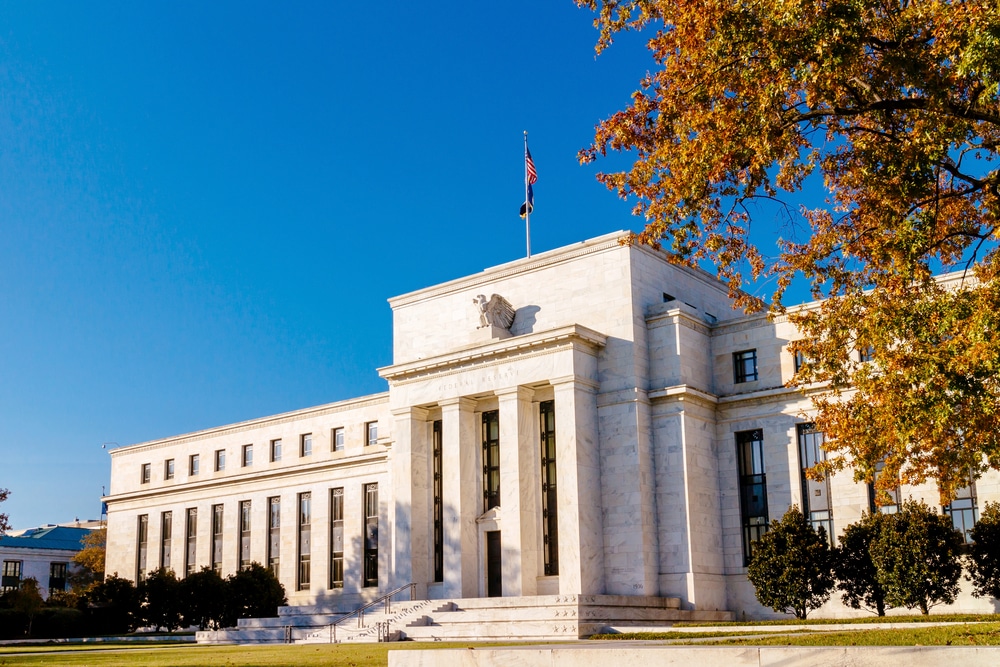A not uncommon reaction from central bank defenders in response to criticism is some form of an apology, arguing a lesser of two evils choice. Posing a counterfactual, they present a scenario, say the East Asian Crisis or subsequent Subprime Crisis, which it is then argued would have been much worse but for the interventions of the Federal Reserve.
“Think how bad it would’ve been had the Fed not been there!”
In fact, in virtually every case, one finds the Federal Reserve at or near the root cause(s) of the problem at hand. And though a complete catalog of all the Federal Reserve’s errors is beyond the capacity of a single, reasonably reading-length article to detail, the mistaken policies of the Federal Reserve over just the past few decades ought to suffice to show the century-old monopoly is not only bad at so-called “crisis management,” it is often the very thing causing the crises it ultimately mishandles.
While its deeper origins lie in the total mess the Federal Reserve created under Arthur Burns during the 1970s, it is a fact that the inflation of that decade and the government’s response to it created the necessary conditions of the later Savings and Loan Crisis of the 1980s.
Very briefly, the business model of the Savings and Loan (hereafter S&L), originating and holding thirty year fixed home mortgages, could not survive the high inflation of the 1970s. Holding books of low-interest, fixed-rate mortgages for their duration suddenly became unsustainable and it was well-understood in Washington policy circles that many wouldn’t survive. Recognizing that had S&Ls not been legally barred from offering higher interest rates, or diversifying, they would have been in a position to endure despite the adverse macroeconomic environment created by the Fed, the S&Ls were belatedly given permission to try and save themselves starting in the early 1980s.
However, by this point many were already underwater. With FSLIC (the S&L equivalent of the FDIC) lacking the resources to handle the collapse of so many S&Ls at once, regulators decided to systematically ignore the problem. Under the cover of “regulatory forbearance,” a policy of literally ignoring that these “Zombie S&Ls” were insolvent, regulators simply crossed their fingers and hoped that these S&Ls would grow their way back to solvency.
S&L managers everywhere promptly got themselves in even deeper, while the comparatively few thriving S&Ls were encouraged to tie themselves down with the bad; thus, by the time the bailout of the industry was finally authorized at the end of the decade it costed five times as much as FSLIC had been short in the first place.
A similar set of processes were in play during another of the period’s economic travails. With the Federal Reserve of the 1970s piling reserves into the big American banks, capital controls being lifted, and inflation eating away any return on traditional, low-risk fixed-income, the stage was set for an emerging market lending binge.
Following the logic of today’s Modern Monetary Theorists that “governments can’t run out of money,” Wall Street couldn’t hand over money to the emerging markets of Latin America fast enough. The promise of yields far in excess of those available in the stagflated American market of the period sent them chasing farther and deeper afield.
But as the old adage has it, owing someone $100 is mostly your problem while owing someone $100 million is mostly their problem, it wasn’t long before the same banks were lending their clients yet more money just to keep them paying on the money they had already borrowed. And in early 1980 when Paul Volcker came in determined to put an end to inflation no matter the cost, he pushed rates into the teens and twenties, which pushed the debt service cost of emerging market dollar borrowings up several-fold.
Predictably, this all quickly fell apart, and those governments and domestic banks refused to continue servicing the debts they had accumulated. An IMF bailout and new loans tied to austerity programs and strict repayment conditions were required to effectively bailout the American banks. Rather remarkably, or maybe rather unremarkably given the precedents being set by the Feds, many of the same theoretical blind spots and failures to do adequate due diligence would soon be repeated in the next emerging market crisis in East Asia.
In the 7th edition of Charles Kindleberger’s classic Manias, Panics, and Crashes: A History of Financial Crises, the University of Chicago’s Robert Aliber describes the outflow of capital from Latin America that accompanied the preceding crisis and the subsequent large foreign capital flows shifting toward East Asia.
The high growth rates of the so-called “Tiger Economies” teased high returns at little risk. Of course, this was not true: properly priced the interest charged bears direct relation to the risk in lending. And much as in Latin America obvious questions went unasked. Questions like, were recipient banks in targeted emerging markets lending to worthwhile projects in the country? How trustworthy were public disclosures in these jurisdictions? What financial instruments were in play and how did they work?
In the case of the former two, questionable loans and bookkeeping methods meant lots of bad debt was piling up out of sight. While in the case of the latter, new funds tracking “East Asia” were often problematically composed, resulting in tiny locales like Hong Kong being mistakenly showered in money from foreign investors out of all proportion to their ability to find productive outlets for it.
In defense of these American investors, it wasn’t as though the Fed hadn’t given clear proof that it could be counted on in a crisis to bail them out. Hadn’t those who had gotten into trouble chasing yield in the developing world made it out more or less ok before? The recent handling of the Mexican-led Tequila Crisis (1994) had offered fresh reassurance.
This atmosphere of moral hazard would only become more pervasive in the wake of the subsequent crisis, which saw not only the big banks but even a big hedge fund, Long Term Capital Management, whose convergence trades were destroyed in the related chaos of the Russian default later in 1998, saved by the intervention of the Fed, IMF, and other regulators.
The message was clear: if you were big enough, and politically connected enough, there was a net. With the now Alan Greenspan-led Fed keeping interest rates below trend, it was “risk-on” on Wall Street.
In fact, the permissive macro environment the Fed was then creating came to be known by a popular shorthand: the “Greenspan Put.”
Basically, from the early 1990s onward any news that might have been expected to negatively impact stock prices, the kind of systemic event one might buy a put option to ensure against, was met by the Greenspan Fed. As the Duke economist Connel Fullenkamp has noted, it was as though every eighteen months or so Greenspan found a reason to inject more liquidity into the system: the second Mexico Crisis, the East Asian Crisis, the Russian Crisis, the tech bubble bursting, even Y2K.
Just as in East Asia, therefore, while one can certainly count many other reasons for the occurrence of a crisis, one finds the Fed’s low interest rate policy significantly to blame for the run up. True, conflicts of interest, mistaken assumptions, and failures of corporate control occurred; and that they did so at the same time as the commercial birth of the internet means a speculative mania possibly would have occurred anyway. But with its cheap money and implicit promise to help, it guaranteed whatever happened would be much worse.
And it would be much worse.
With Congress and the ratings agencies on the take, key lenders operating in the shadows and on an overnight funding basis, mortgage originators rubble-stamping every application on their way out the door, and so-called “financial engineers” slicing up and selling off tranches of these subprime mortgage “pools” at investment grade ratings, things were never going to end well.
That this all came to pass, however, was directly due to the years of cheap money, gross moral hazard, and abundant conflicts of interest Fed policy and oversight created. Confidence was as high as leverage-use with the expectation of a federal backstop, and when it turned out practically everyone was in deep with unknown amounts of toxic assets lurking on balance sheets the emergency brake was pulled.
Political connections paid off, with the early stages of the financial “rescue” being a thinly disguised bailout of the highly connected Citi. And the new regulations Wall Street and its lobbyists managed to put together in the aftermath ensured that *checks notes* nothing seriously changed.
Except, of course, that the industry was more concentrated than ever, and the Fed would be taking rates lower and keep them there for longer over the following decade.
As it happened, the bond market distortions of the Greenspan era were nothing compared to what would follow the Global Financial Crisis and subsequent Great Recession. Zero and near-zero rates for a decade meant the traditional fixed income portion of the 60/40 portfolio was kaput and there really was no alternative to piling into stocks.
With so much money to be had for so little, asset prices broadly began to rise—from art, to wine, to single family housing—big investment funds began diving into areas they had traditionally avoided due to their relative illiquidity and high overhead.
Thus was the Everything Bubble inflated. With the discount rate so low it was hard to find a “bad investment,” no matter how underwater it might be, or how far off or speculative its future profits might be. And so “Zombie Corporations” ran side-by-side with fast-growing but profitless startups, until the market had reached eye-watering metrics (DOW 36,000, Price to Earnings Ratios in the hundreds, altcoins with larger market caps than Ford, et cetera).
This all culminated in the Great Inflation, with the Fed finally losing all control after an extraordinary period of monetary expansion and consumer and producer price inflation finally joining asset price inflation.
Just as it is a truism that complex historical events are rarely, if ever, perfectly monocausal, it can also be fairly stated that the impacts of some events are simply greater than others. In the case of global finance, there has been no more profound shaper of events in the post-war period than the Federal Reserve.
It is telling that the exemplary declamation posed at the outset, “Think how bad it would’ve been had the Fed not been there!” is rhetorical. Prompted to imagine some undefined further crisis, only those with some awareness of the underlying mechanics can be counted on to point out that such risks would not have been taken, and such enormous and dangerous bubbles created, had it not been for the Federal Reserve making a mess of things in the first place.








